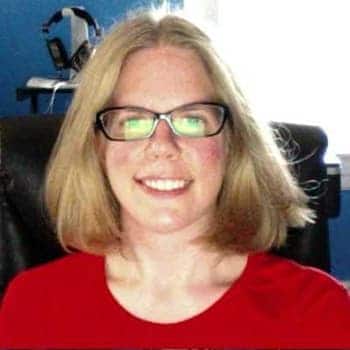While medications are central to the treatment of psychotic disorders, therapy can also be essential. Different therapeutic styles focus on different treatment goals.
Psychotic disordershave an unfair reputation for being difficult to treat. Fortunately, most of these conditions are responsive to a wide range of treatment modalities. Early intervention can be particularly effective.
With the right psychotic disorder treatment and supports in place, people with these conditions can learn how to manage their symptoms and live normal lives.
Medications for Treating Psychotic Disorders
Due to the significant and well-documented influence of brain chemistry on psychotic disorders, the first step in treatment is usually starting a medication regimen. The right medications can disrupt or change processes in the brain that cause or intensify psychotic symptoms. After starting medication, many people experience a complete remission of positive symptoms of many psychotic disorders, including hallucinations and delusions.
Antipsychotic Medications
The most common medications for psychotic disorders areantipsychotic medications. Nearly all of them work by blocking dopamine, which research shows isoveractivein the brains of people with psychotic disorders.
Treatment Can Be Life Changing. Reach out today.
Whether you are struggling with addiction, mental health or both, our expert team is here to guide you every step of the way. Don’t wait— reach out today to take the first step toward taking control of your life.
First-generation antipsychotics weredeveloped in the 1950sand effectively treat psychotic symptoms. However, they are now less commonly used due to serious side effects associated with them, such as tardive dyskinesia and other motor problems.
First-generation antipsychotic medications are also sometimes called “typical antipsychotics.” They include the following:
- Fluphenazine (Prolixin)
- Haloperidol (Haldol)
- Chlorpromazine (Thorazine)
Second-generation, or atypical, antipsychotics were developedin the 1980s. This medication for psychotic disorders is just as effective as first-generation antipsychotics but with fewer side effects. Many atypical antipsychotics are associated with weight gain and increased risk of developing Type 2 diabetes, which are serious but less life-altering than are side effects of older antipsychotic drugs. An up-to-date medication list of medications for psychotic disorders will typically feature the following drugs:
- Clozapine (Clozaril)
- Aripiprazole (Abilify)
- Risperidone (Risperdal)
- Quetiapine (Seroquel)
- Olanzapine (Zyprexa)
- Ziprasidone (Geodon)
Antipsychotic drugs can have an impact within hours, and they can alleviate agitation and confusion within minutes. However, medications for psychotic disorders usually take several weeks to become fully effective.
As antipsychotic drugs reach therapeutic levels, they start clearing the most severe symptoms of psychotic disorders. While some people with severe psychotic disorders never experience total relief from these symptoms, many remain completely free of delusions or hallucinations as long as they continue taking these medications.
Antidepressant Medications
Antidepressant medicationsare often used to augment antipsychotic medications in the treatment of psychotic disorders. They are commonly used to treat resistant symptoms in schizophrenia, especially negative and mood symptoms like flat affect and anhedonia.
A 2015 study suggested that at least25 percentof people with schizophrenia experience comorbid depression. Research shows that antidepressants not only alleviate depressive symptoms but effectively reduce negative symptoms of schizophrenia when combined with antipsychotic medications. Antidepressants shown to be effective when used in combination with antipsychotics include:
- Mirtazapine (Remeron)
- Citalopram (Celexa)
- Fluoxetine (Prozac)
- Sertraline (Zoloft)
The antidepressant medications used as part of a medication regimen depends on a range of factors, like comorbid illnesses and interactions with other medications.
Anti-Anxiety Medications
Anxiety disorders affectover 18 percentof people in the United States each year. They are even more prevalent for people with psychotic disorders. One analysis showed that nearly 40 percent of people with schizophrenia had at least one co-occurring anxiety disorder. Some antidepressants are also used to effectively treat anxiety disorders. These include:
- Citalopram (Celexa)
- Paroxetine (Paxil)
- Sertraline (Zoloft)
- Venlafaxine (Effexor)
Benzodiazepines like lorazepam (Ativan) are sometimes used for people with schizophrenia and other psychotic disorders to treat symptoms of anxiety and psychotic agitation.
Therapy for Psychotic Disorders
While medications are central in the treatment of psychotic disorders, therapy can also be essential. Different therapeutic styles focus on different treatment goals and areas of concern, but many types of therapy for psychotic disorders can help people manage their mental health condition and maintain a higher quality of life.
Traditional forms of psychotherapy were insight-based and not considered to be helpful for people with even temporary cognitive deficits or distorted thought processes. Psychotherapy has since developed a strong supportive component that makes it more broadly applicable. Supportive psychotherapy focuses on the formation of a good relationship between a therapist and client, whichcan help people with psychotic disordersby reducing paranoia, promoting acceptance of treatment and encouraging adherence to medication and treatment plans.
Related Topic:How long does psychosis last
Cognitive Behavioral Therapy
Cognitive behavioral therapy(CBT) is especially effective for people with psychotic disorders. Disorganized and irrational thought processes are common in these conditions and CBT targets these symptoms.
By helping clients monitor and analyze their thought processes more closely than they otherwise would, cognitive behavioral therapy for psychotic disorders helps people with these conditions make rational connections and recognize when psychotic symptoms are arising. It also helps strengthen reality testing skills when a person’s illness makes it harder for them to discern internal from external events.
Cognitive Enhancement Therapy
Cognitive enhancement therapy (CET) wasdeveloped for people with schizophreniaand focuses even more intensely on cognitive processes, especially social cognition, than CBT does. It involves a suite of connected interventions, including neurocognitive enhancement exercises done on computers, structured groups with homework assignments and individual coaching.
Research showsthat this intervention yields significant positive outcomes, including improved emotional information processing, cognitive organization and functional outcomes like higher rates of employment.
Acceptance and Commitment Therapy
Acceptance and commitment therapy(ACT) is a CBT-based intervention that encourages people to accept their feelings instead of trying to change them. It incorporates mindfulness and other practices that help people experience their emotions more deeply without believing in or reacting to them. It can show people how to separate their sense of self from the ways they think and act, giving them the freedom to act in ways that don’t match their inner states.
In severe and persistent mental illnesses like schizophrenia, it is difficult, if not impossible, to control psychological processes, and trying to do so can increase instead of reduce distress. Acceptance and commitment therapy for psychotic disorders works by encouraging people to make external changes that promote internal change instead of the other way around.
This therapeutic intervention has been shown to be especially effective for people with psychotic disorders,cutting rates of rehospitalizationin half.
Coordinated Specialty Care
Coordinated specialty care (CSC) has been shown to bethe most effective intervention for early psychosis, or an individual’s first instance of hallucinations or delusions. Also known as first episode psychosis, early psychosis is sometimes a symptom of an underlying psychotic disorder.
Coordinated specialty care is a set of different interventions carefully selected to address different symptoms and aspects of a person’s life. The six components of CSC are:
- Case management
- Family support and education
- Psychotherapy
- Medication management
- Supported employment and education
- Peer support
This suite of services helps people experience improved family relationships, increased social connection and more consistent symptom management after early psychosis. Many case managers also refer clients to services needed to address other issues like underlying medical or mental health problems.
The extent to which CSC improves a person’s quality of life is related to how quickly they start receiving care. The interconnected services of CSC provide support that can allow an individual to respond to changes in their condition quickly, helping prevent rehospitalization and other potential consequences of symptom recurrence.
Family and Group Therapy
Family and group therapy provides some of the same interventions as individual therapy in a group context that facilitates learning and peer support.
Infamily therapy, families can learn how to change patterns of communication or behavior that can increase stress and worsen outcomes for people with psychotic disorders. Family members can gain insight into how their loved one feels and learn how to support one another.
Ingroup therapy, clients can connect with one another in ways that reduce shame and feelings of isolation, as well as learn effective ways to cope and manage symptoms from their peers.
Treating Psychotic Disorders and Co-Occurring Conditions
Since psychotic disorders manifest in complex ways, many interventions used for them already incorporate multiple treatment modalities. This makes it easier to address co-occurring conditions.
Case managers can refer clients with psychotic disorders to additional treatment or to supportive services as needed, and psychiatrists can adjust medication regimens to address new symptoms or comorbid conditions.
The frequency with which people with psychotic disorders have co-occurring substance use disorders is high. Research shows that as many as three-fourths of people with psychotic disorders also have a substance use disorder at some point in their lifetimes.
Typically, substance use and psychotic disorders are treated with separate but integrated services. This means people with dual diagnoses see different clinicians that are part of the same treatment team. In integrated approaches, therapists, psychiatrists, case managers and other team members communicate with one another and coordinate interventions.
People with co-occurring disorders usually participate in both mental health and substance use treatment groups. Individual therapy often incorporates motivational enhancement approaches that aremore effectivefor people with dual diagnoses. Sometimes, medication management is used to address both psychotic and substance use disorders through the use of replacement or agonist medications like buprenorphine and naltrexone.
In other cases, what initially appear to be co-occurring psychotic and substance use disorders end up being substance-induced psychosis. The symptoms of substance-induced psychosis tend to subside during professional care for addiction, once use of the substance discontinued. In cases of physical dependence, the symptoms of substance-induced psychosis can extend until the withdrawal period is complete.
If you or someone you know deals withdrug or alcohol abuse alongside a psychotic disorderor another mental health condition and is looking for this kind of treatment,contact The Recovery Villagetoday. A representative can talk to you about services that can prevent hospitalization and promote a good quality of life for people with dually-diagnosed disorders.








